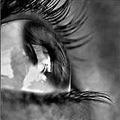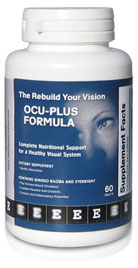Corneal Dystrophy Information

Corneal Dystrophy is where the cornea loses its normal transparency due to several foreign buildups that causes the cornea to become cloudy.
When the Cornea is cloudy or misty, light has a hard time entering into the Retina and the cornea cannot process it properly.
There are various types of this disease; in fact, there are over 20. Anything that has affected a part of the cornea is typically considered to be this.
Depending on the type of corneal dystrophy you have, it has a wide range of how it can affect a person's vision. From very mild causes that result in no noticeable Loss of Vision to complete visual impairment.
To be considered a corneal dystrophy disease, it must share some of these common traits:
- It begins within one of the five corneal layers.
- Progresses slowly.
- It affects both eyes.
- It is typically inherited.
- It is not caused by diet or injury.
- It only affects the eyes and not the body.
- It is not obtained by a disease in the body.
- It can occur in healthy people.
Some of the common diseases that also classify as corneal dystrophies are Keratoconus Disease, lattice dystrophy, and Fuchs’ dystrophy
- Keratoconus is a disease that affects the shape of the cornea. A cornea shape is naturally round and smooth, but due to unknown reasons, the cornea starts to become shaped like a cone. This causes the eye to view several different images instead of focusing on one direct image. It is suspected that Keratoconus is genetic.
- Lattice dystrophy is a buildup of amyloid deposits or abnormal protein fibers all across the third layer of the cornea. When a doctor sees this buildup, it looks like commas on top of one another and branching filaments. If nothing is done to Protect Your Eyesight, these lattice shapes will start to become cloudy. This gives the cornea an opaque and mistiness to it, which will greatly decrease vision. People with this disease will start to develop a scar around the first layer of the cornea (the epithelium) this greatly compromises eyesight. When this happens a corneal transplant is needed to correct vision again.
- Fuchs' dystrophy is a known progressive disease that slowly takes over both of the eyes. It is more common among 50-60 year old females than males. However, signs have shown has early as 30 years old. This disease occurs when the filth layer of the cornea starts to decay. It is known that when endothelial cells start to decay, it does not regenerate back. They are lost forever.
When these cells are lost, there is nothing removing liquid that enters into the third layer of the cornea (the stroma). This results in swelling and distorted vision.
When nothing is done, the epithelium (the first layer) starts to take on water, which results, to extreme discomfort and pain.
The best way to treat this is by going to a doctor that will prescribe you some drops, ointments and maybe even some Contact Lenses.

Subscribe to EyeSight Vision Care! , our monthly newsletter with in depth information to help you keep up to date on how to Protect Your Eyesight with a free bonus. Fill out the form below. You'll then receive an email asking you to confirm that you subscribed. You'll always have the option to unsubscribe at the click of your mouse.
Corneal Dystrophy to other Eye Diseases
Corneal Dystrophy to Protect Your Eyesight






















